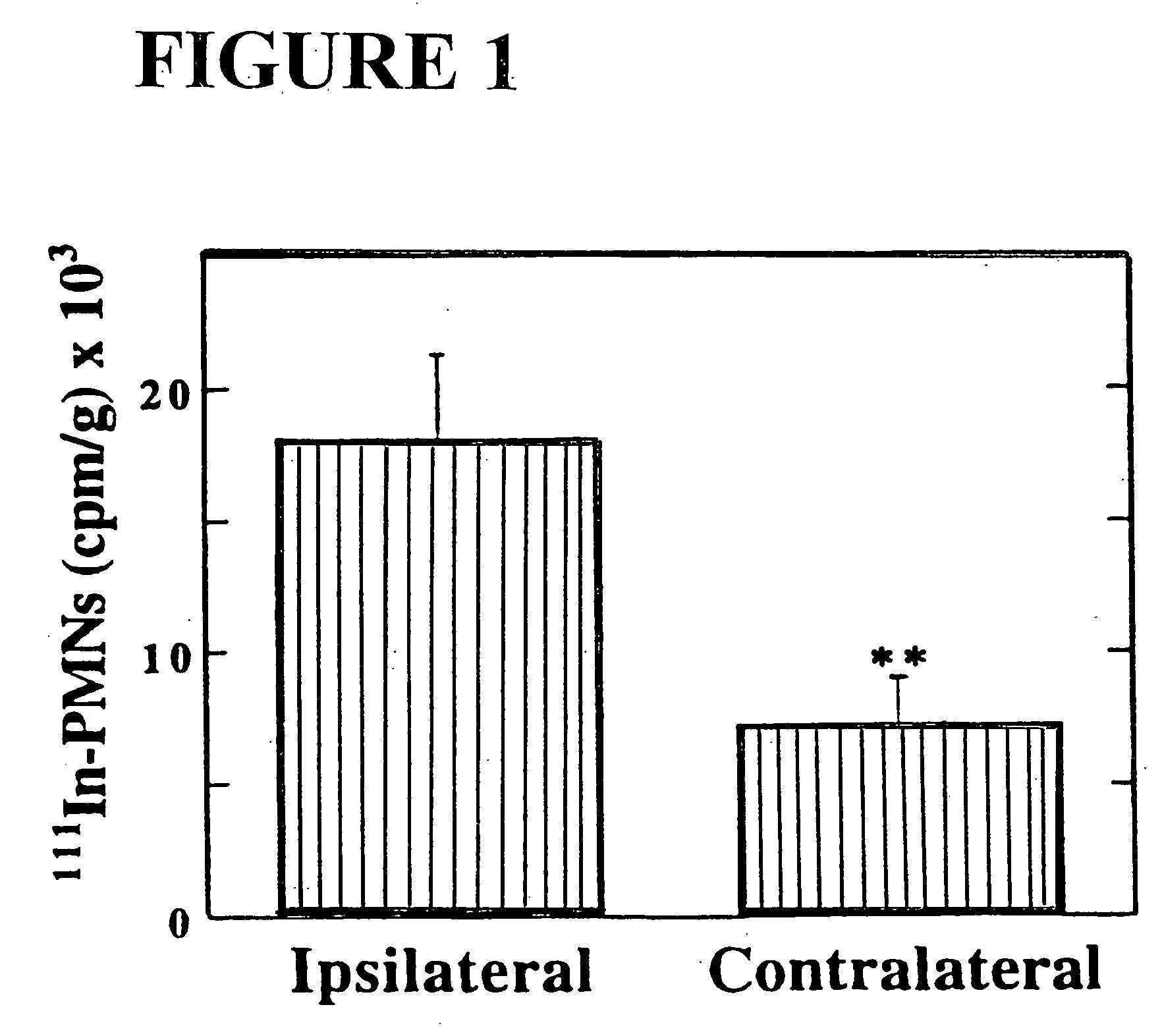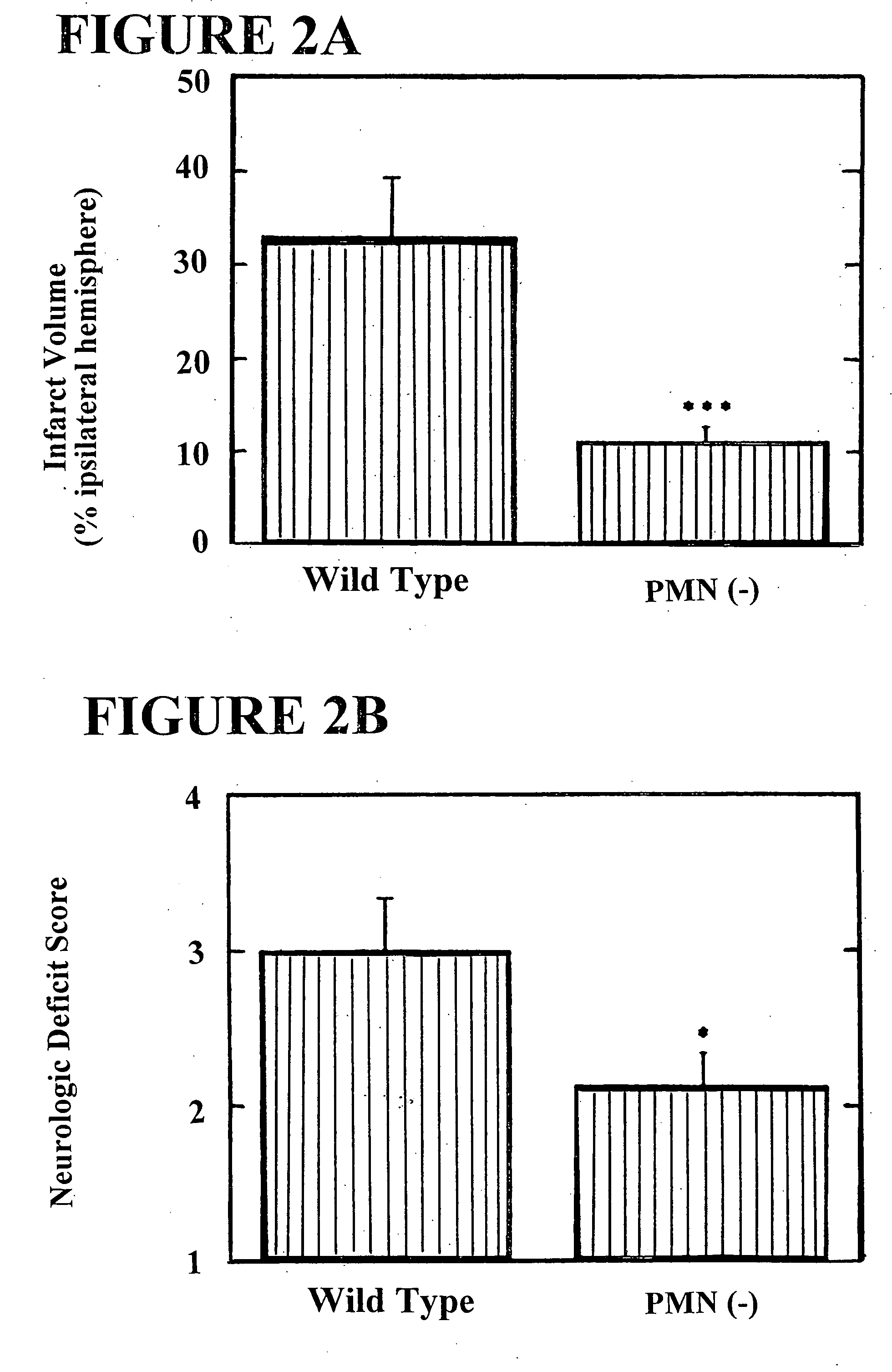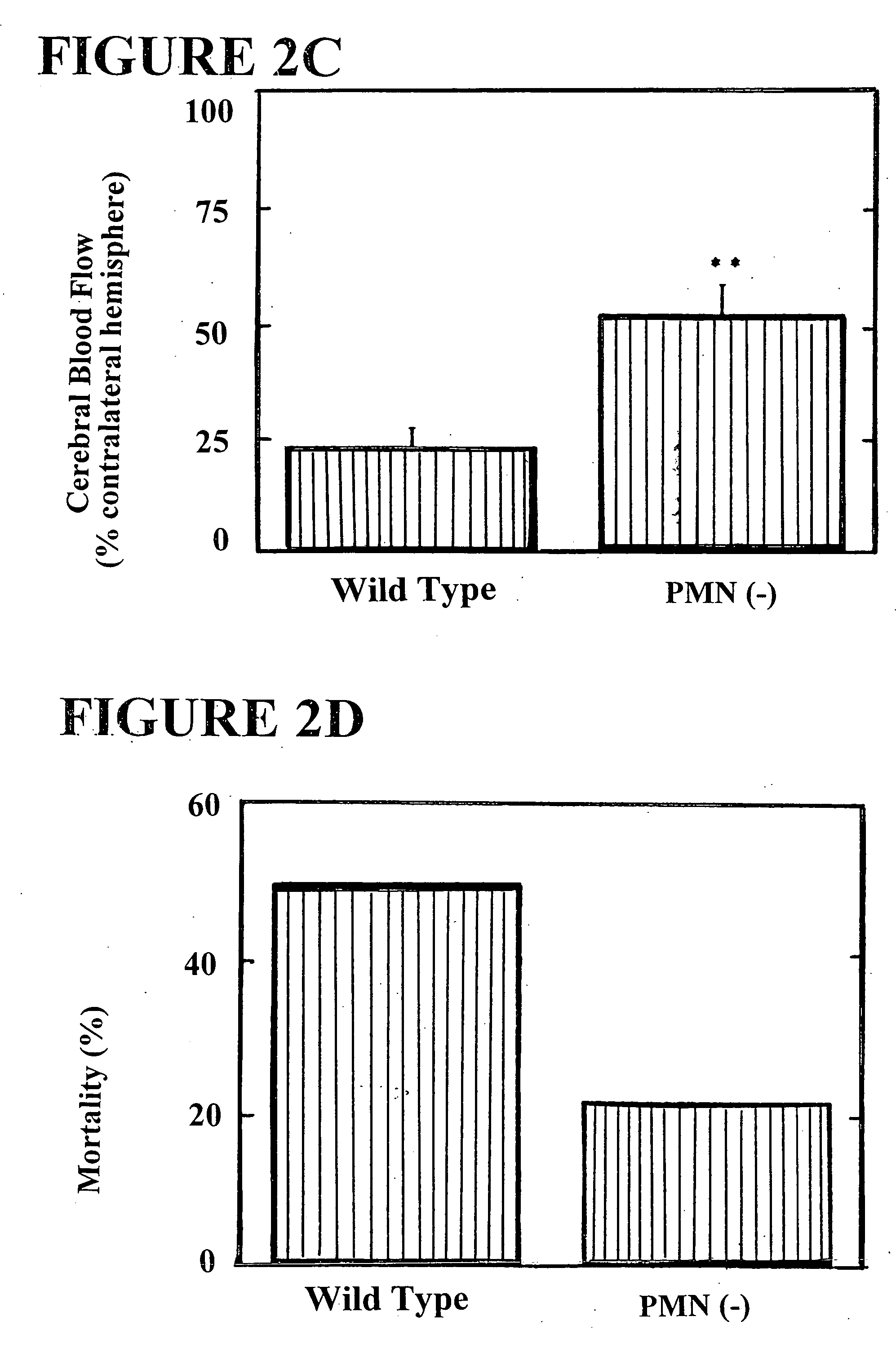Methods for treating ischemic disorders using carbon monoxide
a technology of carbon monoxide and ischemic disorders, which is applied in the direction of peptides/protein ingredients, drug compositions, peptides, etc., can solve the problems of failure to return, failure to achieve the desired clinical effect, and element of microcirculatory failur
- Summary
- Abstract
- Description
- Claims
- Application Information
AI Technical Summary
Benefits of technology
Problems solved by technology
Method used
Image
Examples
example 1
Cerebral Protection in Homozygous Null ICAM-1 Mice Following Middle Cerebral Artery Occlusion: Role of Neutrophil Adhesion in the Pathogenesis of Stroke
[0082] To investigate whether polymorphonuclear leukocytes (PMNs) contribute to adverse neurologic sequelae and mortality following stroke, and to study the potential role of the leukocyte adhesion molecule Intercellular Adhesion Molecule-1 (ICAM-1) in the pathogenesis of stroke, a murine model of transient focal cerebral ischemia was employed consisting of intraluminal middle cerebral artery (MCA) occlusion for 45 minutes followed by 22 hours of reperfusion. PMN accumulation, monitored by deposition of 111Indium-labelled PMNs in postischemic cerebral tissue, was increased 2.5-fold in the ipsilateral (infarcted) hemisphere compared with the contralateral (noninfarcted) hemisphere (p<0.01). Mice immunodepleted of neutrophils prior to surgery demonstrated a 3.0-fold reduction in infarct volumes (p<0.001), based on triphenyltetrazolium...
example 2
Hypoxia-Induced Exocytosis of Endothelial Cell Weibel-Palade Bodies: A Mechanism for Rapid Neutrophil Recruitment Following Cardiac Preservation
[0163] The period of hypoxia (H) is an important priming event for the vascular dysfunction which accompanies reperfusion, with endothelial cells (ECs) and neutrophils (PMNs) playing a central role. It was hypothesized that EC Weibel-Palade (WP) body exocytosis during the hypoxic / ischemic period during organ preservation permits brisk PMN recruitment into post-ischemic tissue, a process further amplified in an oxidant-rich mileu. Exposure of human umbilical vein ECs to an hypoxic environment (pO2=20 torr) stimulated release of von Willebrand factor (vWF), stored in EC WP bodies, as well as increased expression of the WP body-derived PMN-adhesion molecule P-selectin at the EC surface. Increased binding of 111In-labelled PMNs to hypoxic EC monolayers (compared with normoxic controls) was blocked with a blocking antibody to P-selectin, but was...
example 3
Procedural and Strain-Related Variables Significantly Effect Outcome in a Murine Model of Focal Cerebral Ischemia
[0242] The recent availability of transgenic mice has led to a burgeoning number of reports describing the effects of specific gene products on the pathophysiology of stroke. Although focal cerebral ischemia models in rats have been well-described, descriptions of a murine model of middle cerebral artery occlusion are scant, and sources of potential experimental variability remain undefined. It was hypothesized that slight technical modifications would result in widely discrepant results in a murine model of stroke, and that controlling surgical and procedural conditions could lead to reproducible physiologic and anatomic stroke outcomes. To test this hypothesis, a murine model was established which would permit either permanent or transient focal cerebral ischemia by intraluminal occlusion of the middle cerebral artery (MCA). This study provides a detailed description o...
PUM
| Property | Measurement | Unit |
|---|---|---|
| Fraction | aaaaa | aaaaa |
| Fraction | aaaaa | aaaaa |
| Fraction | aaaaa | aaaaa |
Abstract
Description
Claims
Application Information
 Login to View More
Login to View More - R&D
- Intellectual Property
- Life Sciences
- Materials
- Tech Scout
- Unparalleled Data Quality
- Higher Quality Content
- 60% Fewer Hallucinations
Browse by: Latest US Patents, China's latest patents, Technical Efficacy Thesaurus, Application Domain, Technology Topic, Popular Technical Reports.
© 2025 PatSnap. All rights reserved.Legal|Privacy policy|Modern Slavery Act Transparency Statement|Sitemap|About US| Contact US: help@patsnap.com



